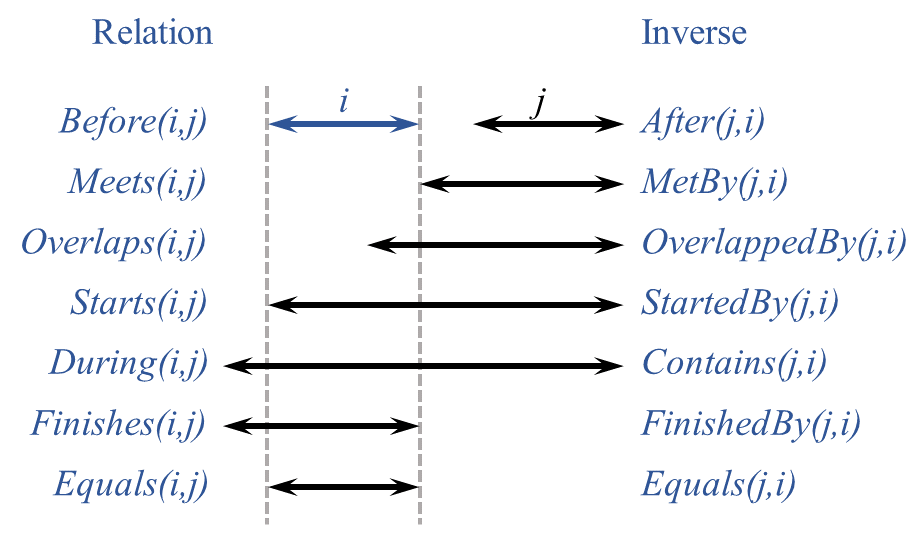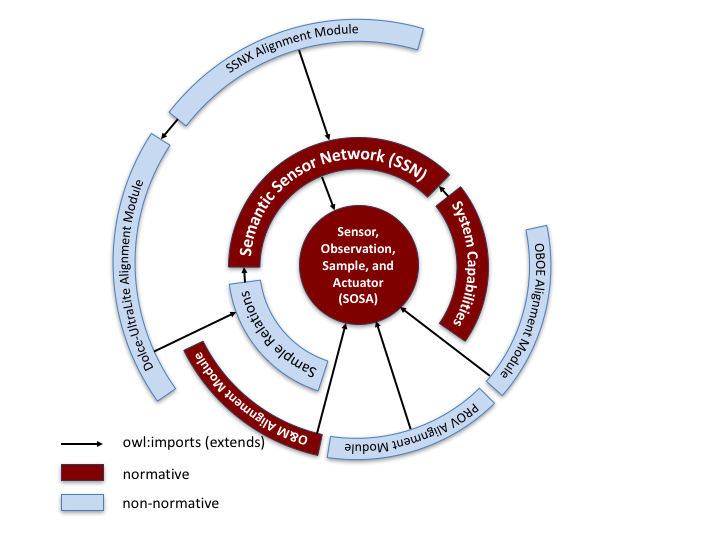News
W3C Invites Implementations of Preload
26 October 2017 | Archive
The Web Performance Working Group invites implementations of the Preload Candidate Recommendation. This specification defines the preload keyword that may be used with link elements. This keyword provides a declarative fetch primitive that initiates an early fetch and separates fetching from resource execution.
Time Ontology in OWL is a W3C Recommendation
19 October 2017 | Archive
 The Spatial Data on the Web Working Group has published a W3C Recommendation of the Time Ontology in OWL specification. The ontology provides a vocabulary for expressing facts about topological (ordering) relations among instants and intervals, together with information about durations, and about temporal position including date-time information. Time positions and durations may be expressed using either the conventional (Gregorian) calendar and clock, or using another temporal reference system such as Unix-time, geologic time, or different calendars.
The Spatial Data on the Web Working Group has published a W3C Recommendation of the Time Ontology in OWL specification. The ontology provides a vocabulary for expressing facts about topological (ordering) relations among instants and intervals, together with information about durations, and about temporal position including date-time information. Time positions and durations may be expressed using either the conventional (Gregorian) calendar and clock, or using another temporal reference system such as Unix-time, geologic time, or different calendars.
Semantic Sensor Network Ontology is a W3C Recommendation
19 October 2017 | Archive
 The Spatial Data on the Web Working Group has published a W3C Recommendation of the Semantic Sensor Network Ontology. The specification defines an ontology for describing sensors and their observations, the involved procedures, the studied features of interest, the samples used to do so, and the observed properties, as well as actuators.
The Spatial Data on the Web Working Group has published a W3C Recommendation of the Semantic Sensor Network Ontology. The specification defines an ontology for describing sensors and their observations, the involved procedures, the studied features of interest, the samples used to do so, and the observed properties, as well as actuators.
SSN follows a horizontal and vertical modularization architecture by including a lightweight but self-contained core ontology called SOSA (Sensor, Observation, Sample, and Actuator) for its elementary classes and properties. With their different scope and different degrees of axiomatization, SSN and SOSA are able to support a wide range of applications and use cases, including satellite imagery, large-scale scientific monitoring, industrial and household infrastructures, social sensing, citizen science, observation-driven ontology engineering, and the Web of Things.
W3C Invites Implementations of Remote Playback API
19 October 2017 | Archive
 The Second Screen Working Group invites implementations of the Remote Playback API Candidate Recommendation. The specification defines an API extending the
The Second Screen Working Group invites implementations of the Remote Playback API Candidate Recommendation. The specification defines an API extending the HTMLMediaElement interface of HTML that enables controlling remote playback of media from a web page.
W3C Invites Implementations of Tracking Preference Expression (DNT)
19 October 2017 | Archive
The Tracking Protection Working Group invites implementations of an updated Candidate Recommendation of Tracking Preference Expression (DNT). This specification defines the DNT request header field as an HTTP mechanism for expressing a user’s preference regarding tracking, an HTML DOM property to make that expression readable by scripts, and APIs that allow scripts to register exceptions granted by the user. It also defines mechanisms for sites to communicate whether and how they honor a received preference, including well-known resources for retrieving preflight tracking status, a media type for representing tracking status information, and the Tk
response header field for confirming tracking status.
W3C Invites Implementations of CSS Flexible Box Layout Module Level 1
19 October 2017 | Archive
The CSS Working Group invites implementations of an updated Candidate Recommendation of CSS Flexible Box Layout Module Level 1. The specification describes a CSS box model optimized for user interface design. In the flex layout model, the children of a flex container can be laid out in any direction, and can “flex” their sizes, either growing to fill unused space or shrinking to avoid overflowing the parent. Both horizontal and vertical alignment of the children can be easily manipulated. Nesting of these boxes (horizontal inside vertical, or vertical inside horizontal) can be used to build layouts in two dimensions.
CSS is a language for describing the rendering of structured documents (such as HTML and XML) on screen, on paper, in speech, etc.
Call for Review: Page Visibility Level 2 is a W3C Proposed Recommendation
17 October 2017 | Archive
The Web Performance Working Group has published a Proposed Recommendation of Page Visibility Level 2. This specification defines a means to programmatically determine the visibility state of a document. This can aid in the development of resource efficient web applications. Page Visibility Level 2 replaces the first version of Page Visibility and includes a few Processing and IDL clarifications, as well as some new features. Comments are welcome through 14 November 2017.
W3C Invites Implementations of CSS Backgrounds and Borders Module Level 3
17 October 2017 | Archive
The CSS Working Group invites implementations of an updated Candidate Recommendation of CSS Backgrounds and Borders Module Level 3. This draft contains the features of CSS relating to borders and backgrounds. The main extensions compared to level 2 are borders consisting of images, boxes with multiple backgrounds, boxes with rounded corners and boxes with shadows.
CSS is a language for describing the rendering of structured documents (such as HTML and XML) on screen, on paper, in speech, etc.
First Public Working Draft: TTML Profiles for Internet Media Subtitles and Captions 1.1
17 October 2017 | Archive
The Timed Text Working Group has published a First Public Working Draft of TTML Profiles for Internet Media Subtitles and Captions 1.1. This specification defines two profiles of [TTML2]: a text-only profile and an image-only profile. These profiles are intended to be used across subtitle and caption delivery applications worldwide, thereby simplifying interoperability, consistent rendering and conversion to other subtitling and captioning formats.
